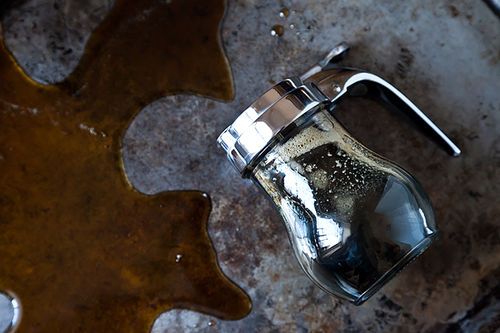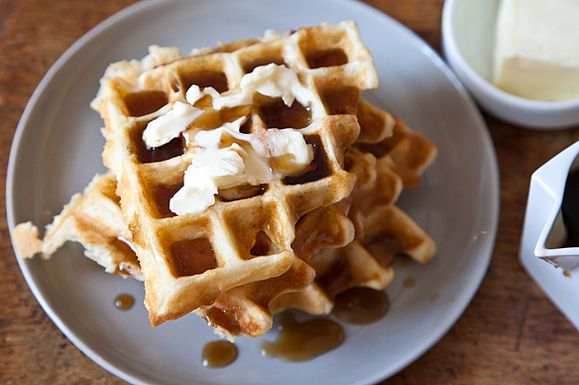
The voting is on in our Your Best Maple contest. While we wait for the votes to come in, here are some facts and figures about everyone's favorite pancake topping:
What is maple syrup?
Quite simply, maple syrup is the concentrated sap of the sugar maple tree, found primarily in the Northeastern US and Canada. How do we get sap out of trees? It all depends on the weather: during the long, cold months of winter, sap stays stationary in the tree as its roots draw water up from the ground for nourishment. When spring arrives, the sap slowly warms and starts to move through the tree. Because of the cycle of warm days and cool nights in early spring, maple sap is always on the move -- freeze and thaw, over and over.
This is the key! "Sugarmakers" (as maple syrup producers are called) drill small openings called "tapholes" into each tree and insert a tube or spout. As the sap inside the tree thaws and begins to flow, it drains out of the tree into tapholes that empty into buckets. This gathered sap is what eventually becomes maple syrup.
How is it made?
To concentrate the sap into what we know and love as maple syrup, all a sugarmaker has to do is boil it. And boil it, and boil it, and boil it -- it takes a whopping 40 gallons of sap to make just 1 gallon of finished maple syrup! If you've ever reduced balsamic vinegar to a glaze or boiled apple cider until only a syrupy essence remained, you're familiar with this concept: evaporating water by boiling leaves behind a much more concentrated end product. To give you an idea of just how concentrated, maple syrup has a 66% sugar density as opposed to 2-4% in maple sap.

Maple Report Cards
Grade A, Grade B -- what does it all mean? After being boiled, maple syrup is tasted and classified according to its flavors and thickness. The basic breakdown is as follows:
• Grade A Light Amber/Vermont Fancy - Mild, delicate flavor. Sap drawn from maples earlier in the season when the weather is colder produces this lighter syrup.
• Grade A Medium Amber - A bit darker with a fuller flavor
• Grade A Dark Amber - Stronger maple, caramel, and other flavors
• Grade B - Strongest flavors
The three Grade A maple syrups are perfect for topping pancakes or using as a garnish. For stronger maple flavor in cakes, roasts, and more, the stronger Grade B packs a more flavorful punch.
Maple Sugar, Candy, and Fudge
When you make candy, it's important to use a themometer to monitor the temperature of the heated sugar -- at different stages of the boiling process the end product can range from chewy caramel to crackly toffee. Maple syrup is no different! As it boils and furthers concentrates, you can make many kinds of maple treats. As outlined here, boiling temperatures in the 230-240 degree range yield fudgy, creamy maple mixtures that can be pressed into pans for maple fudge and candy. If you keep going until you reach 260, the sugars in the syrup crystallize and form maple sugar.
It's amazing to think that all of these maple products, from syrup to candy, are made from a single ingredient. If you're a FOOD52er with a maple grove -- and we know you're out there -- please comment and let us know how your syrup operations work! And for everyone, don't forget to vote in the contest for Your Best Maple recipe.



See what other Food52 readers are saying.